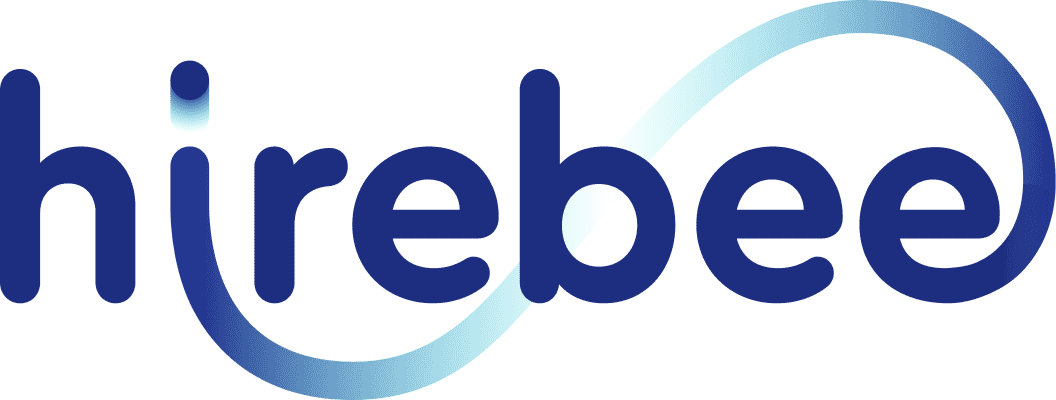Candidate journey mapping is a great way to understand the experience of applying for a job from the eyes of a candidate. It helps to identify areas where the recruitment process can be improved, and can lead to greater candidate satisfaction and increased applicant quality.
Table of Contents
ToggleWhat Is a Candidate Journey Map?
A candidate journey map is a visual or structured representation of every step a job seeker goes through when applying to a company, from discovering the job to receiving an offer or rejection. It includes all interactions candidates have with your brand, including your career site, application process, interviews, and communication.
Think of it like a roadmap that helps recruiters see the hiring process from the candidate’s perspective. By mapping out these stages, companies can better understand what candidates experience, how they feel at each step, and where improvements can be made to create a smoother, more engaging process.
Why Is Candidate Journey Mapping Important?
Mapping the candidate journey brings clarity to the hiring process and highlights both strengths and weaknesses in your recruitment funnel. For recruiters, it helps identify pain points like long response times, unclear communication, or inefficient workflows. These insights make it easier to streamline the process, reduce drop-offs, and ensure consistency across hiring stages.
For candidates, a clear and well-structured journey improves the overall experience, helping them feel valued and informed throughout. This can lead to stronger engagement, increased offer acceptance rates, and positive word of mouth that supports your employer brand. In today’s competitive hiring landscape, where candidate experience can make or break a hire, journey mapping is not just a nice-to-have; it’s a strategic advantage.
To further optimize this process, incorporating insights from a candidate experience survey allows you to gather direct feedback and continuously refine each stage of the journey. This ensures your recruitment efforts remain aligned with candidate expectations and drive better hiring outcomes.
Benefits of Candidate Journey Mapping for Recruiters and Employers
A candidate journey map is a valuable tool for both recruiters and employers, offering a clearer understanding of the end-to-end hiring process from the candidate’s perspective. It helps uncover inefficiencies, improve communication, and deliver a better experience overall.
Here are some of the key benefits of candidate journey mapping:
- Improves the candidate experience by identifying and resolving pain points such as long response times, unclear job descriptions, or lack of feedback.
- Streamlines the recruitment process by revealing where delays or bottlenecks occur, allowing teams to implement more efficient workflows.
- Enhances internal coordination by aligning recruiters, hiring managers, and stakeholders on the process and communication touchpoints.
- Ensures consistent and timely communication throughout each stage, helping candidates stay informed and engaged.
- Supports onboarding and retention by mapping post-offer experiences and ensuring new hires transition smoothly into their roles.
- Highlights areas for strategic improvement, such as tailoring the process for international candidates or adapting to remote hiring practices.
- Strengthens employer branding by creating a more organized and thoughtful recruitment experience that reflects positively on the company.
By clearly mapping out the recruitment journey, employers can build a process that’s not only efficient but also empathetic, leading to better hires, stronger teams, and a more competitive hiring strategy.

How to Build a Candidate Journey Map: A Step-by-Step Process
Creating a candidate journey map involves breaking down the entire recruitment experience into clear stages and identifying key touchpoints along the way. This helps you understand what candidates go through at each step, so you can design a smoother, more engaging, and more efficient hiring process. Below is a step-by-step guide to help you build a candidate journey map tailored to your organization’s needs.
Define Your Ideal Candidate Persona
Before you map out the candidate journey, you need to define who the journey is for clearly. A candidate persona is a semi-fictional profile representing your ideal job seeker based on common traits, goals, and behaviors. This helps you tailor the recruitment experience to attract and engage the right talent.
Start by identifying key demographic and psychographic characteristics:
Demographic traits:
- Job title or function
- Industry or domain expertise
- Experience level (e.g., junior, mid-level, senior)
- Educational background
- Preferred location or work setup (e.g., remote, hybrid)
Psychographic traits:
- Career goals and motivations
- Core values and work-related attitudes
- Interests and professional development priorities
- Pain points or challenges in previous job searches
By building a detailed candidate persona, you can align your messaging, communication style, and recruitment touchpoints to match what your ideal candidates expect and value. This ensures the journey map you create is realistic, relevant, and truly candidate-centric.
Outline the Key Stages of the Journey
To build a clear and effective candidate journey map, you need to define the key stages a candidate goes through from first contact to hire. Each stage should be structured to support a smooth, engaging, and efficient experience for both the candidate and your hiring team.
Here are the four main stages to include:
- Sourcing: This is where the journey begins. Candidates become aware of your job openings through various channels like job boards, social media, employee referrals, career fairs, and your careers page. At this stage, it’s important to optimize your job posts and employer branding to attract the right audience.
- Selection: Once candidates have applied, they move into the selection phase. This involves candidate screening, conducting phone or video pre-interviews, administering relevant assessments, and organizing structured interviews to evaluate fit, skills, and potential.
- Onboarding: After a candidate is selected, onboarding begins. This stage includes background checks, reference checks, and preparing the candidate for their new role. A smooth onboarding experience ensures a strong first impression and helps new hires integrate quickly.
- Contracting: The final stage involves formalizing the job offer. This includes negotiating terms, sending out offer letters, and signing contracts or job agreements. Clear communication and quick follow-through here can reduce candidate drop-off and speed up time-to-hire.
By outlining these stages in your candidate journey map, you create a structured framework that supports better planning, improves efficiency, and delivers a more consistent candidate experience from start to finish.

Map Candidate Needs at Every Stage
To create a truly effective candidate journey map, it’s important to understand and address what candidates need at each stage of the recruitment process. Meeting these needs improves the overall candidate experience and can enhance your employer brand.
Here’s a breakdown of key candidate needs at each stage:
- Sourcing & Application
- Clear, accurate job descriptions that reflect responsibilities and expectations
- Transparency around compensation, working hours, benefits, and growth opportunities
- A simple, user-friendly application process
- Prompt acknowledgment of submitted applications
- Selection & Communication
- Fair and transparent recruitment process
- Timely review of applications and efficient screening
- Regular updates on application status and next steps
- Respectful and inclusive communication throughout
- Interview Process
- Detailed information on the interview format, participants, and expectations
- Adequate time to prepare for interviews
- Flexible options, such as video interviews, are especially suitable for remote candidates
- Clear and timely post-interview feedback
- Onboarding
- A structured onboarding plan with essential resources, tools, and introductions
- A personalized onboarding experience that helps new hires feel welcomed
- Clear guidance on company culture, expectations, and key contacts
- Support in transitioning into the role smoothly and confidently
By understanding what candidates need at each phase, organizations can build a recruitment journey that is respectful, efficient, and engaging, ultimately leading to higher satisfaction and stronger hiring outcomes.
Set Up Key Touchpoints for Engagement
Candidate journey touchpoints are the critical moments where candidates interact with your organization throughout the hiring process. These touchpoints should be designed to provide a seamless, informative, and engaging experience from first contact to final onboarding. By aligning each touchpoint with candidate expectations, you improve the overall experience and build a stronger employer brand.
Here’s how to structure key touchpoints across the candidate journey:
- Initial Touchpoints
- Career Page & Job Boards: Ensure the career page is easy to navigate, visually appealing, and aligned with your employer brand. Job descriptions should be clear, concise, and informative, outlining responsibilities, required skills, benefits, and workplace culture.
- Application Process: Use intuitive platforms that make it easy for candidates to apply, submit documents, and track their application status.
- Selection and Assessment
- Pre-Screening: Use application filters, assessments, or short questionnaires to streamline candidate evaluation.
- Interview Process: Communicate the format and expectations, offer flexible scheduling, and ensure timely follow-ups.
- Candidate Communication: Provide regular updates and feedback to keep candidates engaged and informed throughout the process.
- Post-Hiring Touchpoints
- Offer Letter and Contracting: Share offer details promptly and provide easy-to-follow instructions for the next steps.
- Onboarding: Deliver a well-structured onboarding experience with personalized content, introductions to the team, and access to necessary resources and tools.
Each touchpoint should reflect the organization’s values while prioritizing clarity, efficiency, and the candidate’s perspective. By designing these interactions thoughtfully, you create a smoother and more rewarding experience for both candidates and hiring teams.

Choose the Right Communication Channels
Selecting the right communication channels is crucial for guiding candidates through a smooth and engaging journey. These channels shape how candidates experience each stage of the process, from awareness to onboarding, and help employers deliver consistent, timely, and personalized communication.
Here are some common communication channels used throughout the candidate journey, and how they help enhance the experience:
- Website: Your career site is often the first touchpoint candidates encounter. It should present your company’s values, open roles, culture, and application instructions. A well-designed, mobile-friendly website builds credibility and invites deeper engagement.
- App: A dedicated app or use of job platforms with mobile apps allows candidates to browse job listings, apply, and communicate directly with recruiters, all from their devices, ideal for tech-savvy or on-the-go applicants.
- Email: A primary channel for communicating updates, interview invitations, and follow-ups. Emails should be timely, professional, and personalized to ensure candidates stay informed and engaged.
- Social Media: Platforms like LinkedIn, Instagram, and Twitter help showcase your employer brand, highlight company culture, and share job openings with a broader audience in a more casual, authentic tone.
- Physical Mail: While less common, physical mail can be impactful for formal communication with executive-level or hard-to-reach candidates, especially when used for offer letters or welcome kits.
- Other Outlets: Channels such as SMS, chatbots, or messaging platforms (like WhatsApp) can be used for real-time updates, reminders, and quick responses, especially effective for younger demographics or high-volume recruitment.
Using a strategic mix of these channels ensures your messaging aligns with candidate preferences while supporting your recruitment goals. It also helps create a consistent, multi-touch experience that keeps candidates informed and engaged throughout their journey.
Visualize the Complete Candidate Journey
Creating a visual representation of the candidate journey is a crucial step in building a comprehensive and effective recruitment strategy. It helps organizations understand each stage of the process, identify gaps, and highlight where improvements or additional resources may be needed.
It’s essential to involve all stakeholders, including HR managers, hiring managers, and recruitment coordinators, when building the visual map. This collaborative approach ensures alignment across teams and transparency in expectations, which ultimately supports a seamless and consistent experience for candidates.
To begin, start with a high-level overview of the entire recruitment process. Break it down into specific phases such as job description creation, application, pre-screening, interviews, offers, and onboarding. Within each phase, detail the individual steps and candidate interactions.
Use visual aids such as timelines, flowcharts, or swimlane diagrams to organize and present information. Color codes can be especially helpful to differentiate between stages, responsible teams, or types of communication. For example:
- Blue for application stages
- Green for interview touchpoints
- Orange for onboarding tasks
To bring your candidate journey map to life, consider using tools such as:
- Miro or Lucidchart for collaborative journey mapping
- Canva for visually appealing diagrams
- Figma for design-oriented teams
- Microsoft Visio for corporate-friendly workflows
Lastly, regularly review and update the visual map based on feedback and new data. A well-maintained candidate journey map not only improves internal coordination but also enhances the overall candidate experience by identifying and eliminating friction points.
Conclusion
Building a successful candidate journey map involves thoughtful planning, collaboration, and continuous refinement. Start by clearly defining your overall goal, what does a candidate need to experience to smoothly transition into a successful employee? Then, identify the critical stages of the recruitment process, from discovering the job to receiving an offer and onboarding.
Map out each stage’s key touchpoints, gather insights from relevant stakeholders, and use visual tools to lay out the journey in a way that’s easy to understand and act on. Don’t forget to regularly collect feedback from candidates and refine the journey to ensure it remains relevant, engaging, and efficient.
An effective recruitment software like Hirebee can help streamline every step of the candidate journey with features such as:
- Customizable job descriptions and branded career pages
- Automated application and screening tools
- Integrated communication channels (email, social media, SMS)
- Interview scheduling and feedback collection
- Personalized and structured onboarding workflows
By using Hirebee, you can not only build a well-structured candidate journey map but also implement it with ease, enhancing your employer brand and ensuring an exceptional candidate experience from start to finish. Start mapping a better candidate journey today with Hirebee.









